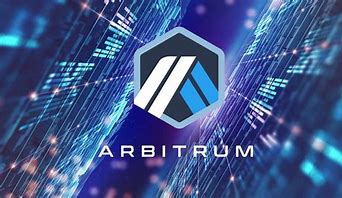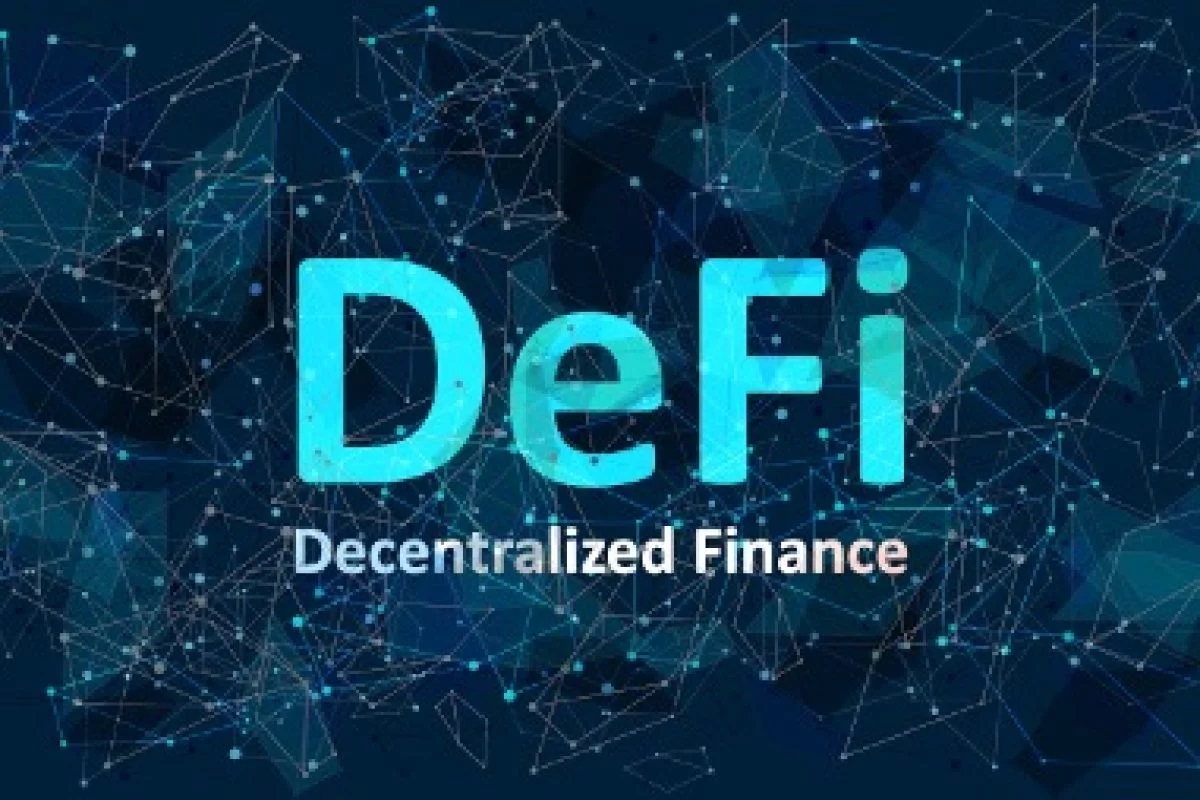Arbitrum Ecosystem & Top Cryptocurrencies
Introduction:
In the cryptocurrency world, new technologies are emerging daily for facilitating users. These technologies aim to come up with all the possible solutions to problems users are facing. One of the emerging ecosystems for this approach is Arbitrum Ecosystem. You are currently at the right spot if you want to learn more about the arbitral Ecosystem and its finest cryptocurrencies.
What is Arbitrum Ecosystem?
Arbitrum Ecosystem is also referred to as Ethereum Scaling Solution. Arbitrum Ecosystem aims to increase the throughput and reduce the gas fees on the Ethereum network. In short, it is an ecosystem of technologies, tools, and services that provides a fast, secure, and low-cost environment for decentralized applications (dApps) and smart contracts.
Arbitrum uses an innovative approach called Optimistic Rollup, which enables it to process a high volume of transactions off-chain and then commit them to the Ethereum blockchain in batches. This approach reduces the congestion on the leading Ethereum network, resulting in faster and cheaper transactions for users.
Best 10 Coins for Arbitrum Ecosystem
● Chainlink(Link)
● Uniswap(UNI)
● Lido DAO(LDO)
● Woo network coin
● Arbitrum coin (ARB)
● The Graph (GRT)
● GMX
● Frax Share
● Maker (MKR)
● Loopring(LRC)
ChainLink:
Chainlink is architecture for creating Decentralized Oracle Networks (DONs), which link smart contracts to other blockchains, off-chain data, and computing power. The Oracle Problem describes how blockchains are restricted in their ability to access off-chain data.
Intelligent contracts require a mechanism to link to the outside world to achieve widespread acceptance. Currently, Chainlink's primary duty is to provide the most precise asset values via its price feeds, which can be included in blockchain protocols' smart contracts.
Uniswap(UNI):
Uniswap, or (UNI) is a well-known cryptocurrency. Users can exchange cryptocurrencies on the Uniswap platform without using a centralized third party.
Holders of UNI control the Uniswap blockchain, which is housed on the Ethereum platform. A public good, according to Uniswap, is its blockchain. The Uniswap blockchain is free and open-source, meaning that anyone can access the blockchain easily.
LIDO(DAO):
LIDO DAO coin (LDO) is a cryptocurrency that powers the LIDO DAO (decentralized autonomous organization), a community-run project that provides decentralized staking services for Ethereum 2.0.
LDO can be bought and sold on cryptocurrency exchanges, and its price is subject to market fluctuations like other cryptocurrencies
Woo network coin
Woo Network Coin is a decentralized platform that allows users to securely connect with each other and securely transact with each other. It is built on the Arbitrum Ecosystem, which is a distributed ledger technology that is optimized for secure, low-cost, and high-speed transactions. The Arbitrum Ecosystem provides a secure, reliable, and transparent environment for users to securely and safely store, send, and receive digital assets. The Woo Network Coin platform is designed to provide users with a fast, secure, and reliable way to interact with each other in a secure, distributed manner. The platform also provides users with a way to securely store, transfer, and receives digital assets and payments.
Arbitrum (ARB):
Like most cryptocurrency projects, Arbitrum is intended to be decentralized. But since the platform's August 2021 launch, Offchain Labs has been the only company in charge. After the launch of the platform's native ARB governance token, this has changed. It has given its community control over the protocol's direction
ARB was just launched and is rapidly expanding. People anticipate growth in the future.
The Graph (GRT):
The Graph, a decentralized protocol for indexing and querying data from blockchains, is powered by the Ethereum token GRT. The Graph analyzes blockchain data from networks like Filecoin and Ethereum in the same way that Google indexes the web.
The platform's native cryptocurrency (GRT) can also easily be traded on various coin exchanges.
GMX:
GMX, a decentralized spot and perpetual exchange that was introduced in 2021, allows users to trade well-known cryptocurrencies. The GMX coin is the protocol’s utility and governance token, enabling holders to cast votes on important judgments and suggestions that determine the course of GMX. Owners of GMX tokens can wager their tokens and receive three different kinds of rewards.
Beginning in January 2022, GMX launched on Avalanche after going live on Arbitrum in September 2021. Its growing rapidly and is on the road to Success. The coin obtains 30% of the revenue the platform generates. It is also used as a liquidity provider is GLP.
FRAX share (FXS):
FRAX share (FXS) is a coin by the decentralized lending platform Frax Finance.
FXS is an Ethereum network-based ERC-20 token. Its main applications are liquidity incentives, minting, staking, and redeeming FRAX, as well as governance. FXS can be locked in vote-escrowed FXS (“veFXS”), where the voting power increases the longer a token is locked, to take part in the governance of Frax Finance.
Maker (MKR):
Maker (MKR) ERC-20 token is a part of the Maker Protocol, a decentralized finance (DeFi) project commonly known as the Multi-Collateral Dai (MCD) system. The community of MKR holders can then vote on which proposal they would want to pass, and the Ethereum address that obtains the most MKR approval votes will be given administrative authority to implement the suggested change to the Maker Protocol.
Holders of MKR have the opportunity to vote on issues pertaining to the Maker Protocol’s development and its usage
Loopring (LRC):
The development of decentralized exchanges that can compete with centralized exchanges in terms of performance is made possible by the Ethereum Layer-2 scaling protocol Loopring (LRC).
The Loopring network’s utility token is the cryptocurrency Loopring (LRC). By using LRC Liquidity providers, insurers, and DAO (decentralized autonomous organization) governors have a vote in how the protocol is governed. LRC is deflationary because tokens from some fees and from operators who have had their stake reduced due to unsatisfactory behaviour burn up.
Benefits of Using Arbitrum:
One of the critical benefits of Arbitrum is its compatibility with existing Ethereum smart contracts and dApps, which can be easily migrated to the Arbitrum ecosystem without any changes to their code. This makes it a desirable option for developers who want to leverage the benefits of Layer 2 scaling without completely rewriting their applications.
The cryptocurrency community has taken notice of Arbitrum thanks to several high-profile initiatives. Uniswap, Aave, and Chainlink are already integrating with the platform. As Ethereum continues to face scalability challenges, Arbitrum is emerging as a promising solution that could help unlock the full potential of decentralized finance (DeFi) and other blockchain-based applications.
Key Features:
Scalability:
One of the biggest challenges facing the Ethereum network is its limited capacity to process transactions. With the growing popularity of decentralized applications, the network has become increasingly congested, resulting in high transaction fees and slow confirmation times.
Interoperability:
The compatibility of Arbitrum with existing Ethereum smart contracts and dApps means that developers can easily migrate their applications to the platform without needing to rewrite their code. This interoperability helps reduce the entry barriers for new projects and facilitates greater collaboration and innovation within the crypto Ecosystem.
User experience:
High gas fees and slow transaction times on the Ethereum network can create a poor user experience, deterring users from using decentralized applications. With Arbitrum, users can enjoy faster, cheaper, and more seamless transactions, improving the overall user experience and driving greater adoption of blockchain-based applications.
Defi:
The emergence of decentralized finance (DeFi) has created a new paradigm for financial services, enabling greater financial inclusion, transparency, and innovation. However, the high gas fees and slow transaction times on the Ethereum network have limited the growth of DeFi.
Final Conclusion:
Arbitrum Ecosystem and its coins are an exciting development in the rapidly evolving world of cryptocurrencies and blockchain technology. However, before making any judgments, performing an in-depth study and weighing the potential risks and advantages is essential.


Global Rashid
I love to share all the experience i have till now related to market and investing with you all.
More to read

